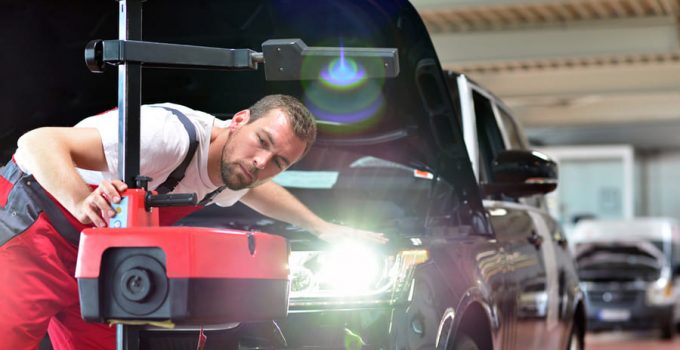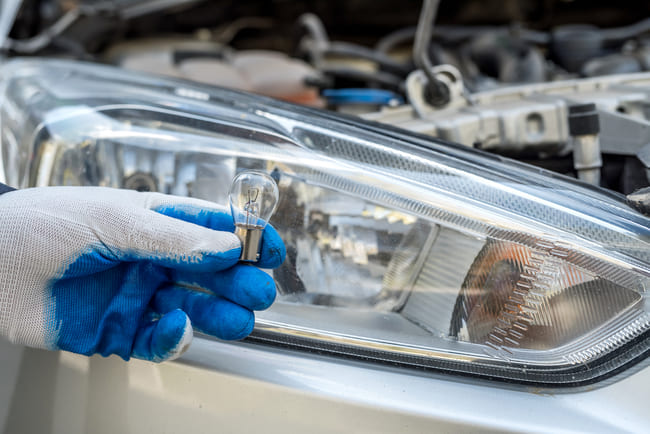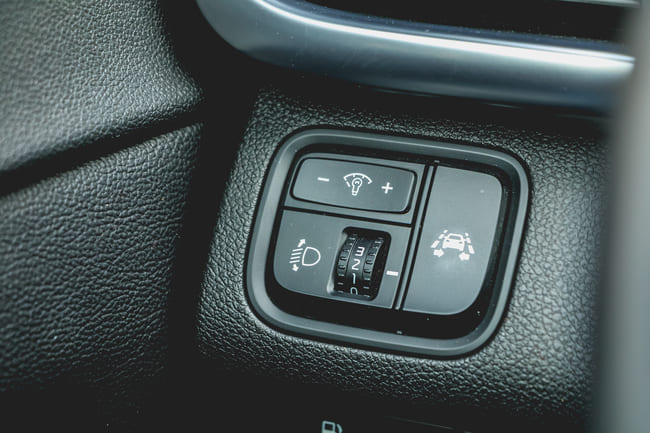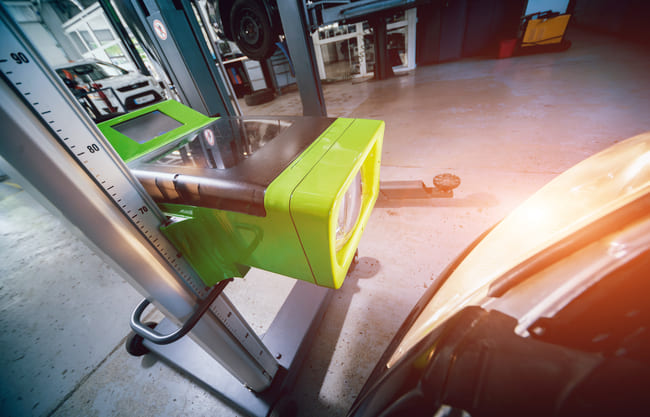
Sometimes it is necessary to realign the headlights. Loading the trunk or driving with a trailer, for example, changes the angle of inclination of the headlights. Low beam, high beam and fog lights are only aligned correctly if the road is optimally illuminated without oncoming road users being dazzled. If this is not the case, the headlights need to be realigned. This article provides information on checking and adjusting headlights.
Contents
When should the headlights be readjusted?
There are various situations in which the light on the car needs to be adjusted:
- When replacing headlight bulbs

- When replacing one or both headlights
- When loading the trunk or driving with a trailer
- When the headlights are noticeably set too low or too high are and the driver is made aware of this with the headlight flasher
The following should be observed when loading the trunk: The heavier the trunk is loaded, for example, the more the rear sinks due to the load, while the front of the vehicle rises. The headlights therefore shine too far upwards, which could blind oncoming drivers. Normally, however, the headlights must shine slightly downwards, while the headlights shine straight ahead with high beam. If the front is lowered or the headlights are set too far down, the situation is reversed: the road is not sufficiently illuminated and other road users or animals on the roadside or in front of you on the road are harder to see in the dark, if at all. In these cases, the angle of inclination or the height of the headlight must be adjusted.
Manual vs. automatic headlight-width regulation
For this purpose, there are basically two options for setting the headlight range control (LWR), i.e. adjusting the light cone of the car headlight: automatic or manual setting.

If it is a car with manual headlight range control, a rotary switch with numbers is installed next to the steering wheel for setting. In this regard, the law has regulated since 1990 that at least one manual headlight controller must be installed in every new vehicle. If the manual headlight range control is installed ex works, it must be set manually. The vehicle manual should specify which headlight range should be set for which load quantity. The maximum headlight range is often set, for example, with the maximum load, while the standard setting is zero with a small load. In workshops, the headlights are adjusted using adjustment screws on the headlights under the hood, with which the inclination angle and the vertical position of the headlights can be adjusted. In the case of the low beam, an angle of inclination of 1 to 1.2 degrees must be set for this. The exact information is noted on the headlight under the bonnet.
Automatic regulation is required by law for xenon, LED and laser headlights over 2000 lumens. This offers a more precise system for adjusting the headlight range. Because here the vehicle inclination is determined using sensors, the data is sent from the control unit to the servomotors of the headlights and the headlight light cone is adjusted accordingly. In modern vehicles, this process takes place either when the vehicle inclines for a longer period of time, such as when it is loaded (static LWR) or continuously automatically whenever there are changes in the driving incline (dynamic LWR), so that consistently good lighting is guaranteed. If, despite everything, LED or xenon headlights have to be adjusted or corrected, only the workshop can do this, as they have the necessary special equipment and tools. The basic setting is corrected with the help of a diagnostic device and the car is then “taught”. Before the actual setting, the fault memory must be read out in order to be able to rule out other faults. In the case of headlights that steer, the headlight range adjustment proves to be tedious, and camera-based devices are also necessary.
Hire yourself or go to the workshop?
The manual headlight adjustment should be carried out in advance by a specialist workshop, because it has its own adjustment devices. If you want to get to work yourself, you should note that the effort involved is relatively high. In addition, there is a risk that the headlights will be adjusted incorrectly, since without a device you can only adjust them by eye. A deviation of a few centimeters can make a significant difference over the distance. Therefore, laypeople are recommended not to adjust the light settings on the car themselves, but to visit a specialist workshop if possible. You will then also receive a light test sticker for this, which confirms that the headlights have been adjusted correctly by a professional. For the reasons mentioned, we only ask that you take note of the following information.
The previously permitted manual check and adjustment of the headlights without a device uses the 10 m wall method, in which the car is at a distance of 10 m from the wall – of the test surface ? is turned off. Using markings, the horizontal and vertical position of the spotlights on the wall are marked, and an auxiliary line is drawn over them. A second correction line below this auxiliary line indicates the height at which the light cone should actually be. The distance is calculated based on the target tilt angle (e.g. if the required tilt angle is 1 degree, the low beam tilts by 10 cm at a distance of 10 m). The headlights are adjusted accordingly. This method is only used for vehicles whose headlights cannot be checked with a device due to their mounting height.

Since this method takes up a relatively large amount of space and requires consistently optimal lighting conditions, modern headlight adjustment devices, or SEGs for short, are now used in workshops instead. These simulate a distance of 10 m with the help of a lens, so that headlight adjustments are also possible in a smaller space than before. All the necessary preparations are made beforehand, including checking the cover windows, the vehicle load, the tire pressure and the evenness of the workshop floor. In addition, the SEG is aligned symmetrically to the vehicle according to precise specifications, with laser lines, rail systems and leveling plate systems ensuring even more alignment accuracy on uneven floors. Since 2018, only more strictly standardized SEGs may be used and strict regulations apply to the entire test station. Marking lines indicate where the light-dark boundary of the individual car lights (low beam, high beam, fog lights) must hit, as a result of which the headlights are adjusted.
Conclusion
The ability to adjust headlights is required by law. The further development of the headlight range control led to automation, so that the driver is relieved more. This reduces the risk of incorrect settings. But modern lighting systems also require advanced diagnostic and adjustment devices. In the case of manual headlight range adjustments, it is better to entrust this task to a workshop if possible, as they have the appropriate equipment and are able to adjust the headlights more quickly and precisely.
A tip from CarTipsandmore: The headlight adjustment can be done as part of the usual inspections. Workshops also offer light tests – often free of charge, especially in autumn. Otherwise, the costs for a light check are manageable.
